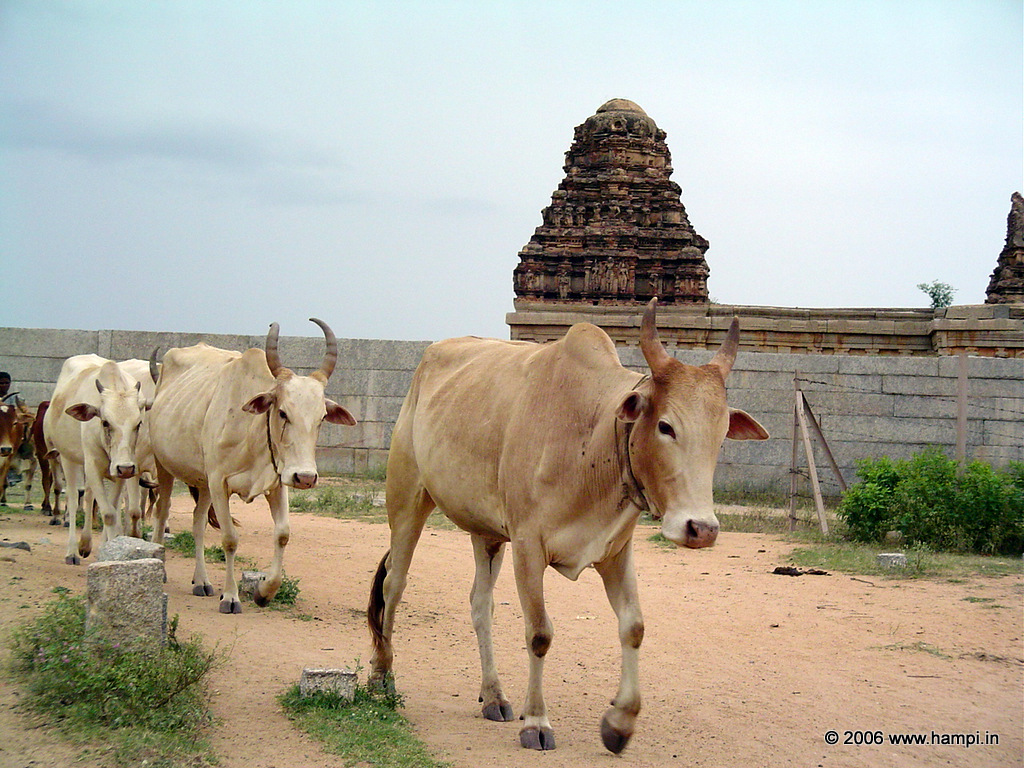Photography
Hampi is photogenic.
Bring your camera along and you won’t regret the trouble.
The green wet planes, the small steep boulder hills, the extravaganza of stone architecture, the life around it all are rich in content for photography.

Two storied gateway at Hemakuta Hill
Non-commercial photography is allowed at almost everyplace you can visit at Hampi without any formalities. The exceptions are probably a couple functioning shrines and the interiors of the museum galleries.
T
he climate of Hampi comes as both boon and bane for photography. By and large the ambient is well lit with sunlight. And that helps you to shoot crisper photos.Hampi’s arid dusty climate makes it mandatory that you protect your camera well, at least keep the lens cap closed soon after every photo session. And the monsoon season though makes the dust settle brings in a humid air.
The evenings and mornings at Hampi are unique times a serious photographer should never miss. The slanting golden rays make the stone architectures and the boulders look special. So is the sunrise and sunset scenery from the top of a hill. The Matanga and Hemakutta Hills are oversold destinations from this perspective. Keep in mind that the so called magical portion of the sunrise or sunset is very short in duration. Typically it won’t last longer than say 30 minutes. Light dims faster than you think during the sunset; the reverse is true for the sunrise. In short, be prepared and be there waiting rather than rushing to the spot in the last minutes.
Most of the temples in allow you to take photographs. However lookout for any of the ‘Photography Not Allowed’ signboard in working temples. The policy is simple - if in doubt ask. Photography is allowed inside the Virupaksha Temple campus. A camera fee (add the camera fee here) charged. You can shoot anywhere inside this temple campus except the inner sanctums and other private areas of the temple.
The Uddana Veerabhadra Temple near the huge statue of Narasimha spots a ‘No Photography’ signboard on its outer wall.
No photography is allowed inside the museum galleries. However you can shoot exhibits kept outside the main buildings.
Through photography is allowed free, tripods are generally not allowed inside the half a dozen or so guarded monuments and temples. This is a norm per se by all the monuments in India under the protection of Archeological Survey of India
Though you can spot numerous shops in Hampi selling film rolls, this is no place to develop your film rolls or do some major photography shopping. Some shops may offer to get your rolls developed by sending it to the nearby town. You need to wait till you reach the next major city if you are expecting a quality studio for that job. Development and postcard sized prints of a regular 35mm film roll can cost you abut Rs250. You can find photo labs in midsized town you may come across.
Hampi has a few digital dens where you can download your digital camera images. Forget about uploading them all, as Internet connection is very slow. Most of such Internet cafes have memory card readers. For about Rs80 you can get it written them on a CD.
And finally a word on the photography etiquette. In general people in India are enthusiastic about getting photographed. Look for a clue in the body-language or ask for permission before you shoot. At times the school kids may mob you to get photographed. Take a shot or two and show them in the viewfinder. A cheer usually results and that’s the best way to get rid of this army.

Sule Bazaar ( Courtesans Street) leading to The Achyutaraya Temple.
Hampi have many hilltop vantage points for photography. The view of Sule Bazar is from the Matunga hilltop.

Cowherds trail outside the Chandrashekara Temple
A very common sene in Hampi village life. Cowherds trail outside the Chandrashekara Temple
